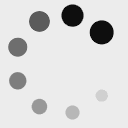Sector 545
Being part of the film… Pierre Creton films himself as he weighs milk for a dairy control, and directs Jean-François, his auditor, whose bust a sculptor friend of Pierre’s is making. He talks to the farmers and asks them to introduce their cat to the camera, and digresses as he dwells on a flower or someone who’s appeared before disappearing again straight away.
Making the film’s material part of oneself… Pierre collects the milk as it flows from the cow’s udder into his hand, irrigating its lines like blood flowing through veins. The milk comes from an animal that’s now probably only viewed as its function, to be milked then slaughtered. Putting one’s arms around a cow’s neck, becoming one with her, is a gesture of fraternity and therefore a political act.
And by asking the farmers about the difference between human beings and animals, by asking them who they are, thereby asking us who we are, Pierre Creton examines how we make ourselves part of this world.
Christian Borghino
Artistic Direction Coordinator
- Year 2004
- Pays France
- Durée 115
- Lien FilmDocumentaire http://www.film-documentaire.fr/4DACTION/w_fiche_film/13578_1
- Producteur Atlante Productions
- Langue French
- Résumé court Pierre Creton, weigher of milk for dairy controls, asks (himself) the question: what’s the difference between humans and animals?
- Corner 1
- Médiathèque 1
- Programmateur Christian Borghino|aucune;
Being part of the film… Pierre Creton films himself as he weighs milk for a dairy control, and directs Jean-François, his auditor, whose bust a sculptor friend of Pierre’s is making. He talks to the farmers and asks them to introduce their cat to the camera, and digresses as he dwells on a flower or someone who’s appeared before disappearing again straight away.
Making the film’s material part of oneself… Pierre collects the milk as it flows from the cow’s udder into his hand, irrigating its lines like blood flowing through veins. The milk comes from an animal that’s now probably only viewed as its function, to be milked then slaughtered. Putting one’s arms around a cow’s neck, becoming one with her, is a gesture of fraternity and therefore a political act.
And by asking the farmers about the difference between human beings and animals, by asking them who they are, thereby asking us who we are, Pierre Creton examines how we make ourselves part of this world.
Christian Borghino
Artistic Direction Coordinator
- Year 2004
- Pays France
- Durée 115
- Lien FilmDocumentaire http://www.film-documentaire.fr/4DACTION/w_fiche_film/13578_1
- Producteur Atlante Productions
- Langue French
- Résumé court Pierre Creton, weigher of milk for dairy controls, asks (himself) the question: what’s the difference between humans and animals?
- Corner 1
- Médiathèque 1
- Programmateur Christian Borghino|aucune;

